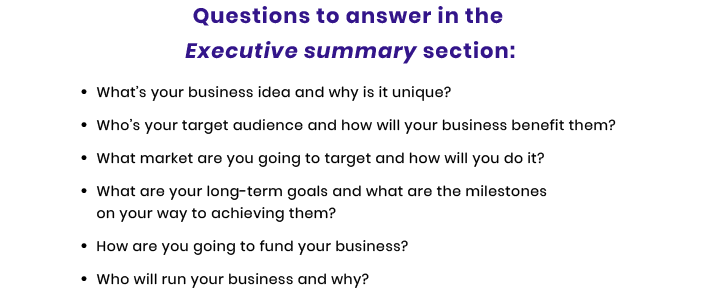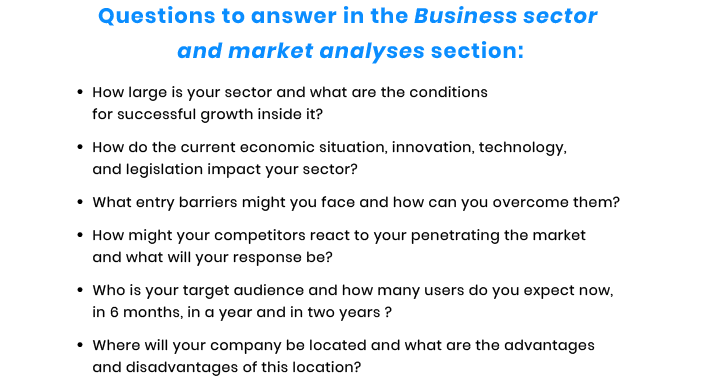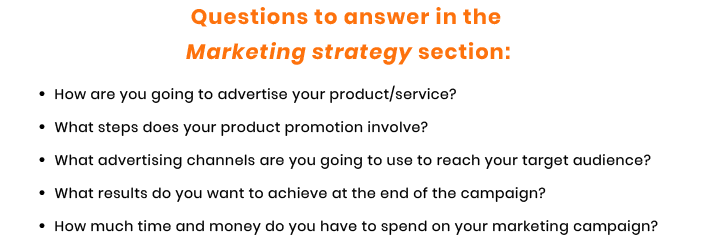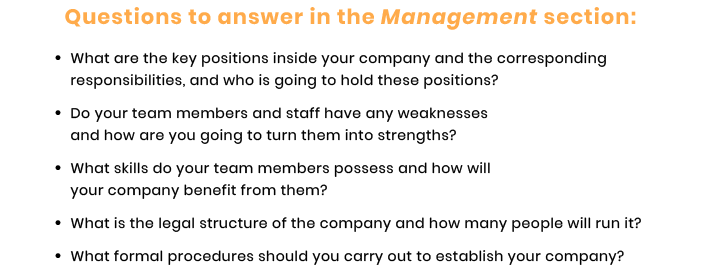-
Product Management
Software Testing
Technology Consulting
-
Multi-Vendor Marketplace
Online StoreCreate an online store with unique design and features at minimal cost using our MarketAge solutionCustom MarketplaceGet a unique, scalable, and cost-effective online marketplace with minimum time to marketTelemedicine SoftwareGet a cost-efficient, HIPAA-compliant telemedicine solution tailored to your facility's requirementsChat AppGet a customizable chat solution to connect users across multiple apps and platformsCustom Booking SystemImprove your business operations and expand to new markets with our appointment booking solutionVideo ConferencingAdjust our video conferencing solution for your business needsFor EnterpriseScale, automate, and improve business processes in your enterprise with our custom software solutionsFor StartupsTurn your startup ideas into viable, value-driven, and commercially successful software solutions -
-
- Case Studies
- Blog
Writing a Business Plan for a Technology Startup and the Benefits for Your Company
Have a business idea but don’t know where to start? Consider creating a business plan first! An extensive and informative business plan allows you to understand your goals, opportunities, and threats, assess the market situation, and get a lot of insights to successfully launch your startup. Moreover, it can help you interest your investors.
Read our article to find out what a business plan is, what its benefits are, and how to create one. Let’s start with a definition.
What’s a business plan?
A business plan presents a detailed vision of your business idea. This document usually consists of 30 to 35 pages and several sections that cover vital topics for your business development such as goals, management, marketing, and funding.
A business plan is usually created before setting up a new business. It projects up to five years into the future to ensure you know where you’re headed at the beginning of your entrepreneurial journey. It’s advisable to revise this plan every month or two to check whether you’re sticking to your goals.
Benefits of creating a business plan
Although creating a business plan requires a lot of time and research, it’s sensible to make one before launching your startup. A business plan helps you realistically assess your opportunities and provides more benefits that we’ll describe below.
Detect weaknesses in your startup idea
When preparing a business plan, you should carry out a SWOT analysis to understand your chances of success.
To perform a SWOT analysis, you need to determine your business’s strengths, weaknesses, opportunities, and threats. Take into account that strengths and weaknesses are internal characteristics of your company that you can control, while opportunities and threats are external factors out of your control.
Once you’ve completed SWOT analysis, pay close attention to your weaknesses. By being aware of your soft spots, you can transform them into workable solutions to make your business successful.
Set goals and milestones
Setting goals is one of the core ideas behind creating a business plan, since by knowing your short- and long-term goals you can clearly understand where your business is heading.
Milestones allow you to track progress toward achieving your goals. Setting milestones is a strategic step that allows you to stick to your plan and not get distracted on your way.
Once you’ve listed your goals, you need to choose the path to achieve them. There are several options to choose from. For instance, you can map a long but predictable path with minimum risks and a short path full of challenges.
Let’s consider different options for launching your MVP as an example. You can choose a soft launch: a careful step-by-step presentation of your product to your target audience. When you use a soft launch approach, you reveal your product to a limited number of users, gather feedback from them, and fix bugs quickly. Thus, we can define a soft launch as a long yet predictable way to reach your goals.
A hard launch, on the other hand, is a short and risky path, since it means presenting a new product to a large number of people at once. It can bring you immediate revenue, but at the same time it can cause a lot of problems if your product isn’t perfect.
Once you’ve distinguished two different paths to reach your goals, which one to choose is up to you.

Make data-driven decisions
Preparing a business plan entails carrying out a lot of research. To make a realistic business plan, you should dive deep into marketing, finance, and management. You should also perform a comprehensive analysis of your direct and indirect competitors to get a full picture of the market situation.
By gathering information about other market players, you can learn about their strengths and weaknesses along with your own. This gives you a chance to better determine your company’s unique value proposition (UVP) and stand out from the competition.
With this information, your business plan is not merely a suggestion but a realistic view of your startup, the challenges you might face, and the ways you can overcome them.
Obtain an effective management tool
With a business plan in hand, it’s easier to manage your progress. Since a business plan includes a map with milestones, you can use it to keep track of how well you stick to and achieve your goals.
A business plan also helps you check whether you’re keeping within your budget and how profitable your business is. Plus, it allows you to monitor other financial aspects such as your employees’ incomes, pay raises, and your bonus system.
Get more information than with a Lean Canvas
Creating a Lean Canvas is a fast way to assess business opportunities. A Lean Canvas is a one-page document with 10 to 12 fields that gives a general overview of the current state of your business, your opportunities, and your goals. Although it’s a nice option for a quick assessment, a Lean Canvas is not very informative.
Here’s an example of how a Lean Canvas looks and what information it can present:

A business plan, in turn, is an extensive document that covers a long period of time (usually up to five years). Consequently, it requires a more comprehensive approach to business analysis than a Lean Canvas does and includes more detailed information about your business idea.
Use your plan as a pitch deck
Once you create your business plan, you can use it as the basis for your pitch deck. Just select the most important information and you’ll have a ready presentation for your investors, business partners, or whoever you want to interest in your business idea.
An informative pitch deck based on your business plan can lead investors to consider your business worth supporting.
How to create a technology startup business plan
Once you understand the benefits a business plan can give you, it’s time to move to developing one. Here are the must-have sections for your business plan.
#1 Executive summary
An executive summary presents your overall business plan. Its aim is to capture your readers’ attention and make them interested in reading through all the details.
This summary should be written in clear language and be understandable even for people who don’t have specific knowledge of your business area.
Do your best to outline the maximum relevant information within a five- to ten-minute read.

To make your executive summary informative and captivating, it’s best to write this section after you’ve finished all the other sections. Also, you should answer all these questions briefly in the summary since you’ll cover them in detail in the following sections.
#2 Business idea
This section is a detailed presentation of your product or service. You should include the following information:
- Product/service description. Cover all the characteristics of your product, its uniqueness in the market, patent issues and compliance requirements (e.g. PCI DSS for payment systems, HIPAA for healthcare, or GDPR compliance), and a description of the development process.
- Benefits for customers. Explain why your product is outstanding, how it reflects the needs of your target audience, and how it will solve your customers’ problems.
- Pricing. Calculate how much it will cost to create your product and decide what monetization approach to choose (for instance, a subscription-based model or one-time payments). Make sure your revenue will cover your expenses.

#3 Business sector and market analyses
In this section, you’ll present the results of your research that show how successfully you can penetrate the desired market.
First of all, analyze your preferred business sector. Pay attention to the current situation in the sector, predicted trends, sources of profit, and entry barriers.
Then, carry out market analysis including geographical, socio-demographic, socio-economic, and behavior-oriented segmentation of your potential customers. These criteria will help you better understand your target audience and attract more customers in the short term.
Finally, perform competition and location analyses. Competition analysis will help you determine your and your competitors’ strengths and weaknesses while location analysis will help you decide on the location for your company.

#4 Marketing strategy
This section demonstrates how you will build your marketing campaign. You already know your target audience, your competitors’ weaknesses, and the strengths of your product, so it’s time to sell it. At this stage, it’s important to decide if your marketing campaign will be extensive or targeted, what steps it will include, how many customers you need to attract to make your campaign successful, etc.

#5 Management
In this section, you should provide information about the key roles inside your company and your legal situation.
When introducing your team, it’s important to mention roles and responsibilities and the qualities that make each person a valuable team member.
By legal situation, we mean the legal structure of your company and the legal framework that determines how your startup operates. You should state whether your business is a one-person startup or a partnership, for instance.

#6 Opportunities and threats
This section describes external opportunities and challenges you can face when starting and expanding your business. To present this information as accurately as possible, you should create both positive and negative forecasts based on detailed research concerning your business sector, the current market situation, upcoming trends, your competitors, etc. Use the results of your SWOT analysis to provide information in this section.

#7 Financial plan
You should prepare a financial plan for the first five years of your business activity. It should include:
- Staff costs. This is the money you’ll spend on human resources at the beginning of your business and as it grows.
- Investment and depreciation information. In this section of the financial plan, you should enumerate any kinds of material investments you plan to make (vehicles, furniture, PCs, etc.) and their predicted service life.
- A profitability plan that includes your revenue and expenses. Make sure that planned revenue exceeds your expenses. There’s no point in starting a business that isn’t profitable.

#8 Funding opportunities
This section should list sources of investment and include the amount of money you need to start your business. You should also list investment options that you’re going to use. You can choose among local banks, venture capitalists, public funding schemes, business angels, and other options.
Once you decide how you’ll fund your business ‒ take out a loan or find investors ‒ include a repayment plan or mention the conditions of cooperation with your financiers.

#9 Map for the future with milestones
In this section, you should describe the step-by-step implementation of your plan. It’s important to set priorities, divide the whole plan into small scopes of tasks, and set realistic deadlines. By doing this, you’ll get milestones that lead to your business success.
It can be a sensible idea to present milestones graphically so it’s easier for your readers to perceive the information and track your progress.

Final thoughts
With an elaborate business plan, you’ll have a clear understanding of your business opportunities and a chance to get into the desired market. Once you’ve created a comprehensive business plan, it’s time to create an MVP to attract your first customers.
FAQ
-
Writing a business plan is an important step before launching a startup. With a detailed business plan, you can:
- Detect weaknesses in your startup
- Set goals and milestones
- Make data-driven decisions
- Obtain an effective management tool
- Get more information than with a Lean Canvas
- Have a starting point for creating a pitch deck
-
There are nine main sections you should include in a business plan:
- Executive summary
- Business idea
- Business sector and market analyses
- Marketing strategy
- Management
- Opportunities and threats
- Financial plan
- Funding opportunities
- Map for the future with milestones
-
Writing a business plan isn’t obligatory, but you might want to do it since having a plan gives a lot of benefits. A business plan can help you understand your opportunities and threats, analyze the current market situation, learn more about your competitors, attract investors, and more.
If you already have a business plan and need help creating your MVP, contact us for professional assistance.










